Anatomy of the Skull and Mouth
$395.00Anterior view of ear/nose/throat
Showing 1–16 of 18 results
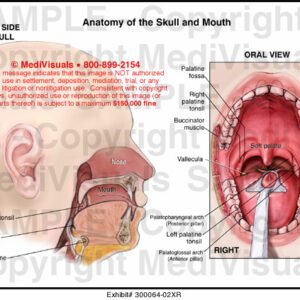
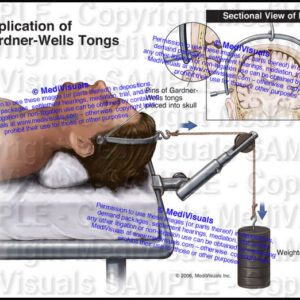
Lateral and sectional view of female head with Gardner-Wells tongs in place for traction.
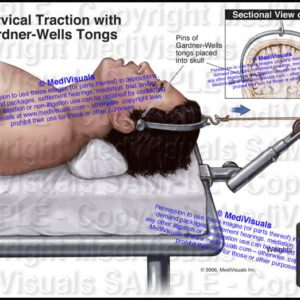
Views of Traction via Gardner-Wells tongs and emphasizing the screws penetrating through the scalp and into the skull with only a thin portion of bone separating the screws from the fragile brain.
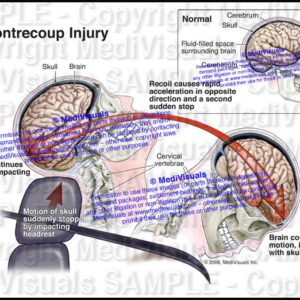
Demonstrates the forces that cause the brain to impact on the inside of the skull during many types of collisions that can cause injuries to the brain even without evidence of a significant impact to the face or back of the head.
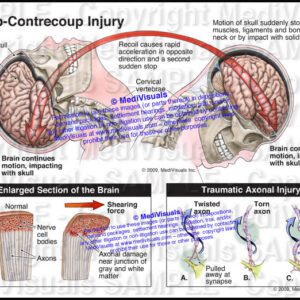
Demonstrates how the brain impacts on the inside of the skull during violent acceleration-deceleration and deceleration-acceleration movements to result in shear injury or traumatic axonal injury even without a significant blow to the head.
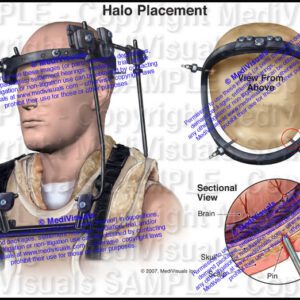
Demonstrates placement of a halo following a cervical spine injury and emphasizes the halo pins penetrating the scalp and extend into the skull – with only a thin portion of bone separating the screws from the fragile brain.
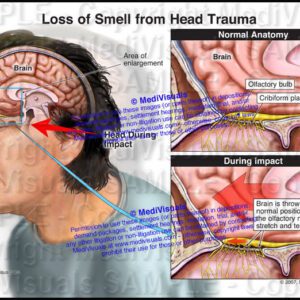
Brain thrown out of normal position causing the olfactory nerves to stretch and tear.
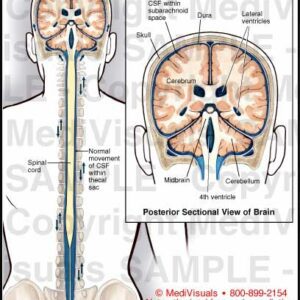
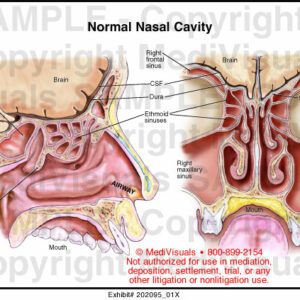
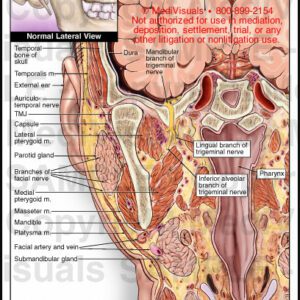
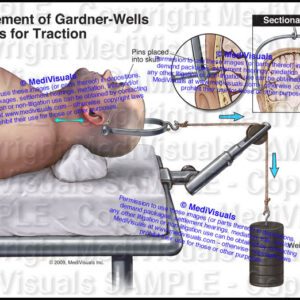
Views of Traction via Gardner-Wells tongs and emphasizing the screws penetrating through the scalp and into the skull with only a thin portion of bone separating the screws from the fragile brain.
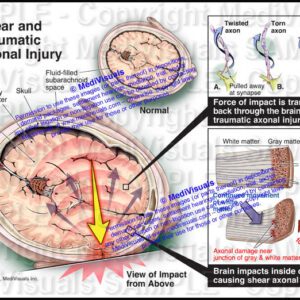
Demonstrates how the brain impacts on the inside of the skull during an impact on the right side of the head. Arrows indicate the forces that travel through the brain to result in shear injury or traumatic axonal injury.
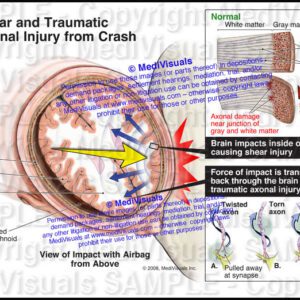
Axial view of brain impacting inside of the skull as the head impacts an airbag. Arrows indicate the forces involved in the collision that travel throughout the brain and result in shear and traumatic axonal injury (TAI) or diffuse axonal injury (DAI).
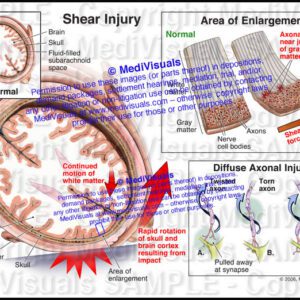
Demonstrates how the brain impacts on the inside of the skull during a right frontal (forehead) impact to result in shear injury or traumatic axonal injury even without a significant blow to the head.
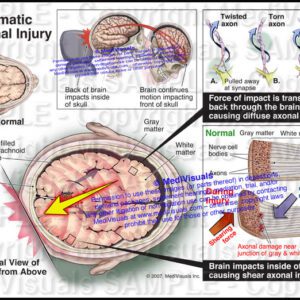
Demonstrates how the brain impacts on the inside of the skull during an impact with a headrest to result in shear injury or traumatic axonal injury.
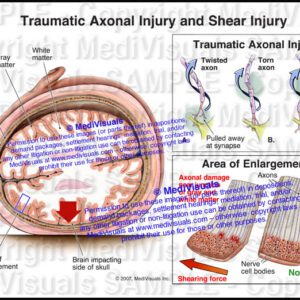
Demonstrates how the brain impacts on the inside of the skull during a left side (parietal) impact to result in shear injury or traumatic axonal injury even without a significant blow to the head.

Medivisuals Inc.
(866) 939-6171 N/A